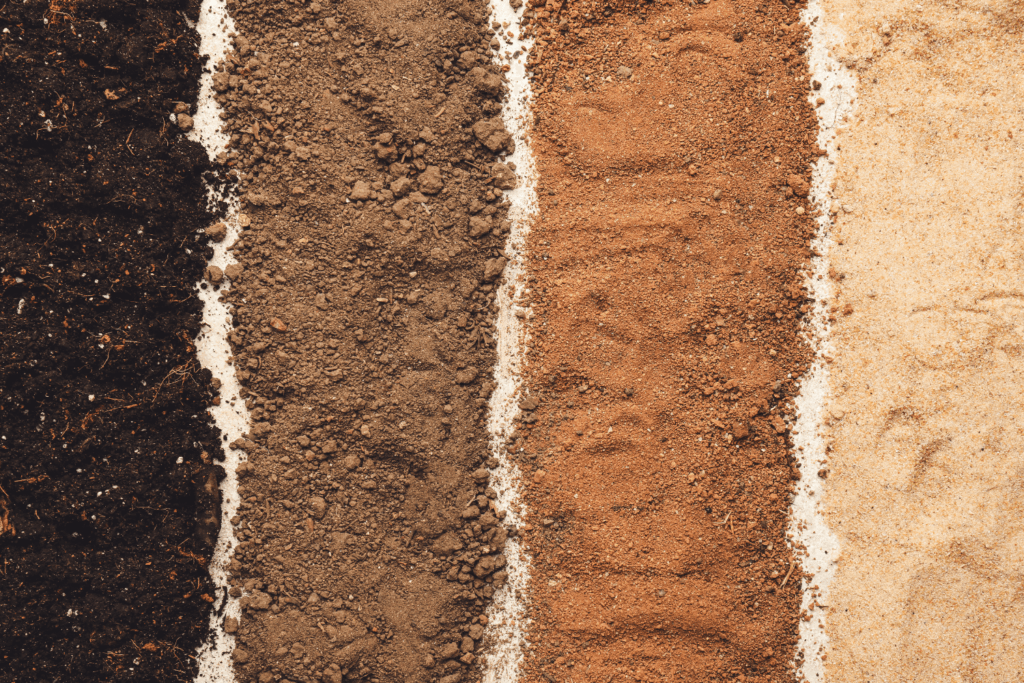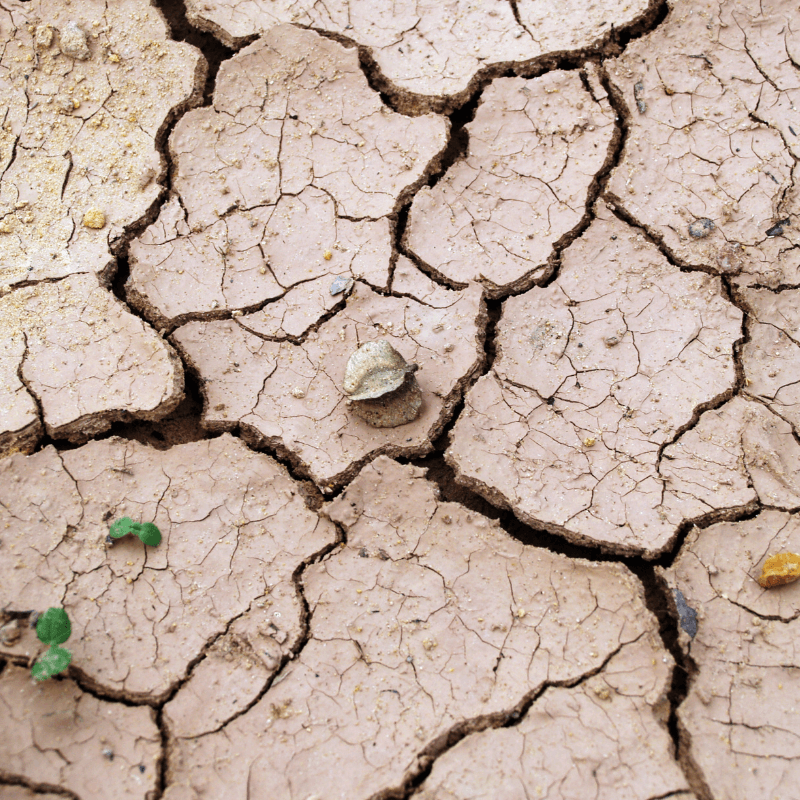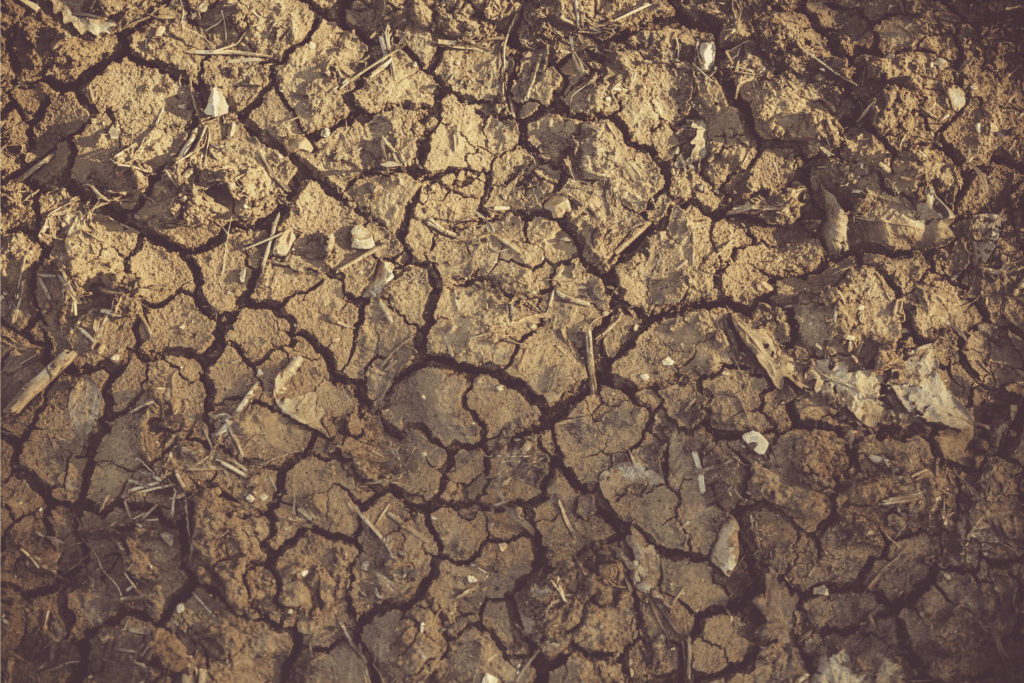Over the hotter, drier months, soil shrinkage can increase your home’s risk of foundation damage. Ground shrinkage occurs when the volume of the soil around your property decreases due to evaporation. This can create gaps and pockets that cause problems on their own, but also become even more dangerous to your home when the seasons change and soil swelling begins. As Western Pennsylvania’s foundation repair specialists, we can help you identify issues with shrinkage so you can get ahead of them before your home is put in jeopardy.
Soil: A Complex Collection of Material and Moisture
If you’ve always thought of the soil under your landscaping as just moist dirt, you’re not alone. Unless you’re an avid gardener or have been caught unaware by big foundation repair bills before, you probably haven’t thought much about what’s under your lawn and landscaping. The truth is that your property’s soil is a unique mixture of different solids mixed with groundwater, and it can behave differently depending on that soil composition, the time of year, or the amount of precipitation that’s moved through the area.
The major components of your soil include:
- Dirt – The “generic” part of your soil is made up of sand in the form of small mineral particles that are largely anhydrous, meaning that they don’t contain, attract, or hold onto water.
- Clay – Like dirt, clay is made of fine mineral particles, but in clay, they primarily consist of hydrous compounds, mostly aluminum phyllosilicates. These can attract and retain water, which is why clay has such a sticky texture when wet.
- Rocks – Larger particles of minerals can vary from the size of a pencil lead to bigger than your fist. Sometimes they’re placed intentionally, like when a layer of gravel is used to promote drainage.
- Biological Matter – Plant and animal matter underground decomposes, leaving behind its minerals and nutrients. This can include dead plants or animals as well as waste products from insects and animals burrowing underground.
- Moisture – The water content of soil can vary as it is captured and released by hydrous materials, becomes trapped in cavities it can’t escape, or moves through gaps between solid materials.
Types of Soil

The mixture of these compounds can affect the kind of soil around your home, and that soil type can have a big impact on soil shrinkage and swelling.
- Sand – Sandy soils are usually lower in clay content. They tend to drain easily, but when gaps do form, it can lead to unstable voids that are prone to collapse.
- Clay-Rich – Clay drains slowly, holding onto water as long as it can. This can make it highly susceptible to seasonal ground shrinkage as voids created by expanding ice in the winter may lead to soil loss in the drier summer months.
- Silt – A mixture of fine sand and clay particles, silt can become tightly packed, with the sticky clay binding to dirt particles to prevent drainage. As the area finally dries, the soil contracts and cracks, creating even more empty spaces.
- Loam – Loam is made up of larger solid particles than silt, allowing for easier drainage while still holding enough moisture to stave off soil shrinkage longer.
Signs of Soil Shrinkage
There are several telltale indicators that soil shrinkage is affecting your property. The unfortunate time is that the changes can happen so gradually that by the time you notice, the issues under your feet have been developing and worsening for several years. That’s why it’s so important to act quickly when you notice:
- Cracking, Uneven Ground – We’re not talking about surface cracks that can form when mud dries quickly under the summer sun. Deep or wide cracks that sink down into the ground show the pressure of being pulled away to fall into voids and fill spaces left behind by retreating moisture.
- Pulling Away From the Foundation – As the soil dries, it often pulls away from your relatively smooth foundation walls because the soil bonds more easily to itself. This can leave deep gaps and cracks for moisture to enter directly next to your foundation while also leaving it with less support from the weight of the soil that usually stabilizes your basement’s walls.
- Undulating Sidewalks and Driveways – Elevation changes at the joints can be some of the easiest signs of soil shrinkage to spot, but if the underground damage is extensive enough, the concrete slabs themselves can crack and break to relieve the pressure of their own unsupported weight.
- Uneven Foundation Settling – Much like sidewalks and driveways, the foundation under your home or accessory structures can settle unevenly due to soil shrinkage. This can lead to tilting floors, sloping walls, and foundation cracks if not addressed quickly.
Why Soil Shrinks
Poor moisture management is the primary cause of soil shrinkage, which is why it is most noticeable in the summer months. All soil, whether developed or undeveloped, will undergo a certain amount of ground shrinkage through the natural process of responding to time and the elements. These same forces are just as responsible for uneven sidewalks as they are for the erosion of mountains and forestlands. By understanding the why behind uncontrolled soil swelling and shrinking, however, you are better able to manage the moisture under your home and extend your home’s life.
- The Freeze and Thaw Cycle – When water freezes, it expands. That’s why ice cubes float and we get cute pictures of seals on iceflows. It doesn’t matter whether that water is in a cube tray or bound inside your soil. In the winter months, that means you’ll have soil swelling, which can increase not only the pressure on your basement walls but also on the force soil particles exert on each other as they make space for the ice. When this ice thaws, the soil contracts back down and the water drains away, leaving behind gaps that gravity pulls the now-smaller soil particles into.
- Improper Excavation and Compacting – Before your foundation or any ground concrete is laid, your contractor will excavate the space and compact it to eliminate existing voids. At least, that’s what’s supposed to happen. Improper excavation, compacting, and backfilling can leave empty spaces that will eventually be filled by gravity, the weight of the structure on top of the soil, or water as it carries loose soil particles into the void on its way to draining.
- Composition Complications – Some soils are more prone to soil shrinkage than others. Clay-rich mixtures experience more soil swelling and contraction than sand-heavy compositions.
- Biologically Created Voids – While proper landscaping and lawn care can help your ground manage moisture, a lack of maintenance may be setting you up for big repair bills. An entire ecological system is at play under your feet every single day. Burrowing roots and animals can leave their marks under your soil, just as the decomposing material they leave behind can. These voids, like those created by other subterranean events, will eventually be filled. While proper landscaping and lawn care can help your ground manage moisture, a lack of maintenance may be setting you up for big repair bills.
It’s important to note that while one of these conditions often turns out to be the primary factor in your soil shrinkage, it doesn’t mean other forces weren’t at play. It’s not uncommon for multiple ground shrinkage causes to be interrelated, compounding your soil issues.

When Temperatures Rise
During the summer, the evaporation speeds up as thermometers climb and dry winds sweep in from the west. Moisture leeches out of the ground in the form of vapor. Water underground moves with gravity, flowing toward natural drainage that’s ready to accept it. With less precipitation replacing the ground moisture, your soil begins to dry out, the clay particles start to contract, and what rain we do get moves through the soil and its now larger voids far too quickly to be absorbed.
What to Do When You Spot the Signs of Soil Shrinkage
If your property is showing signs of ground shrinkage, you need professional foundation and drainage experts who can assess and address the underlying issues. When you request a free inspection, one of our specialists will schedule a time to visit your property to talk to you about the soil shrinkage, identify any damage, work to understand the cause, and develop an action plan. They’ll go over your repair options and cover your preventative opportunities to help control soil swelling and shrinking in the future.
There’s no cost or obligation to get an expert involved in protecting your home. We’ve built our reputation protecting homes while offering honest prices and guaranteed work with American-made materials. Call and schedule your inspection from A.M. Wall Anchor & Waterproofing today.

